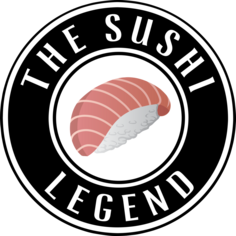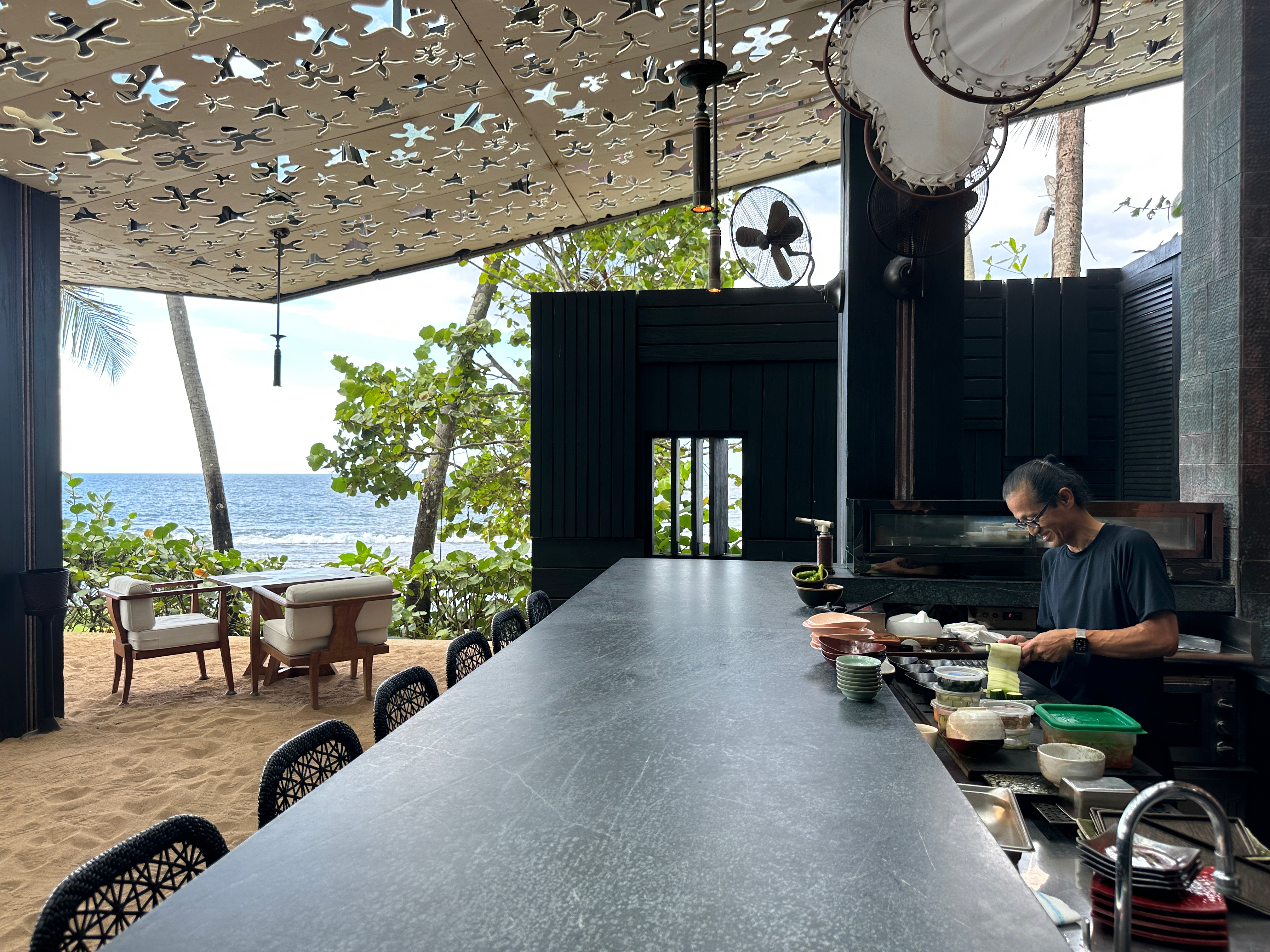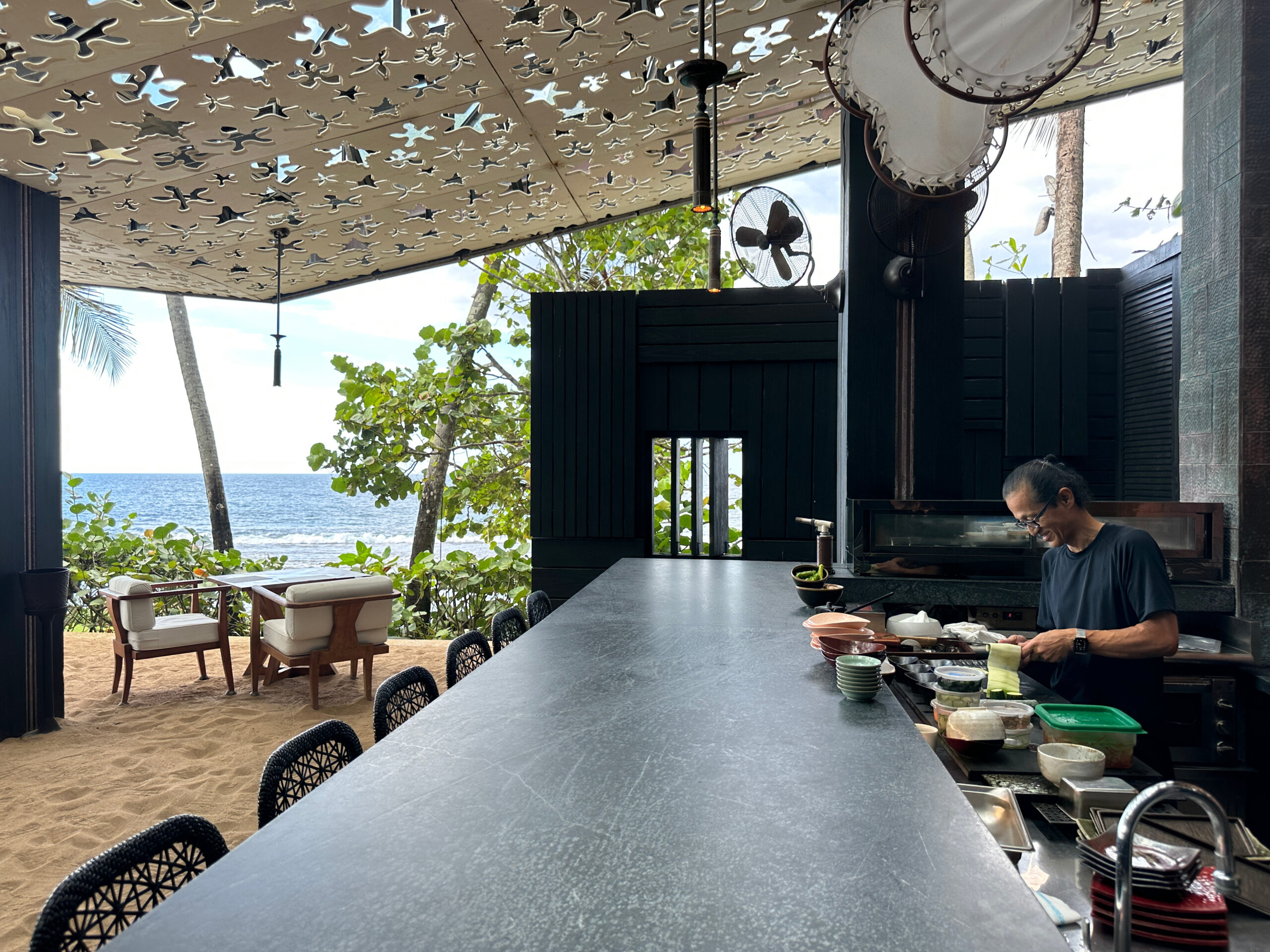
Itamae Masato Okamoto preps for the first Omakase seating steps from the ocean
Legends – we’re almost in vacation season
And that means some of us are about to realize a months-long dream to relax at the pool for 10 minutes before crushing boredom sets in. 15 if there’s a hot tub in the picture, 7 if the Wifi is bad. This is a sliding scale.
Take it from someone who’s spent many years re-reading the same Conde Nast Traveler magazine by the pool: try Puerto Rico, and no they didn’t pay me to say that (only the WWE gets that privilege), I genuinely enjoyed it.
The good news is if you’re a vacationer or tax “planner”, there’s a dozen places worthy of your attention.
The bad news is that if you love sushi, Puerto Rico lies somewhere between Bucharest and Pluto for options.
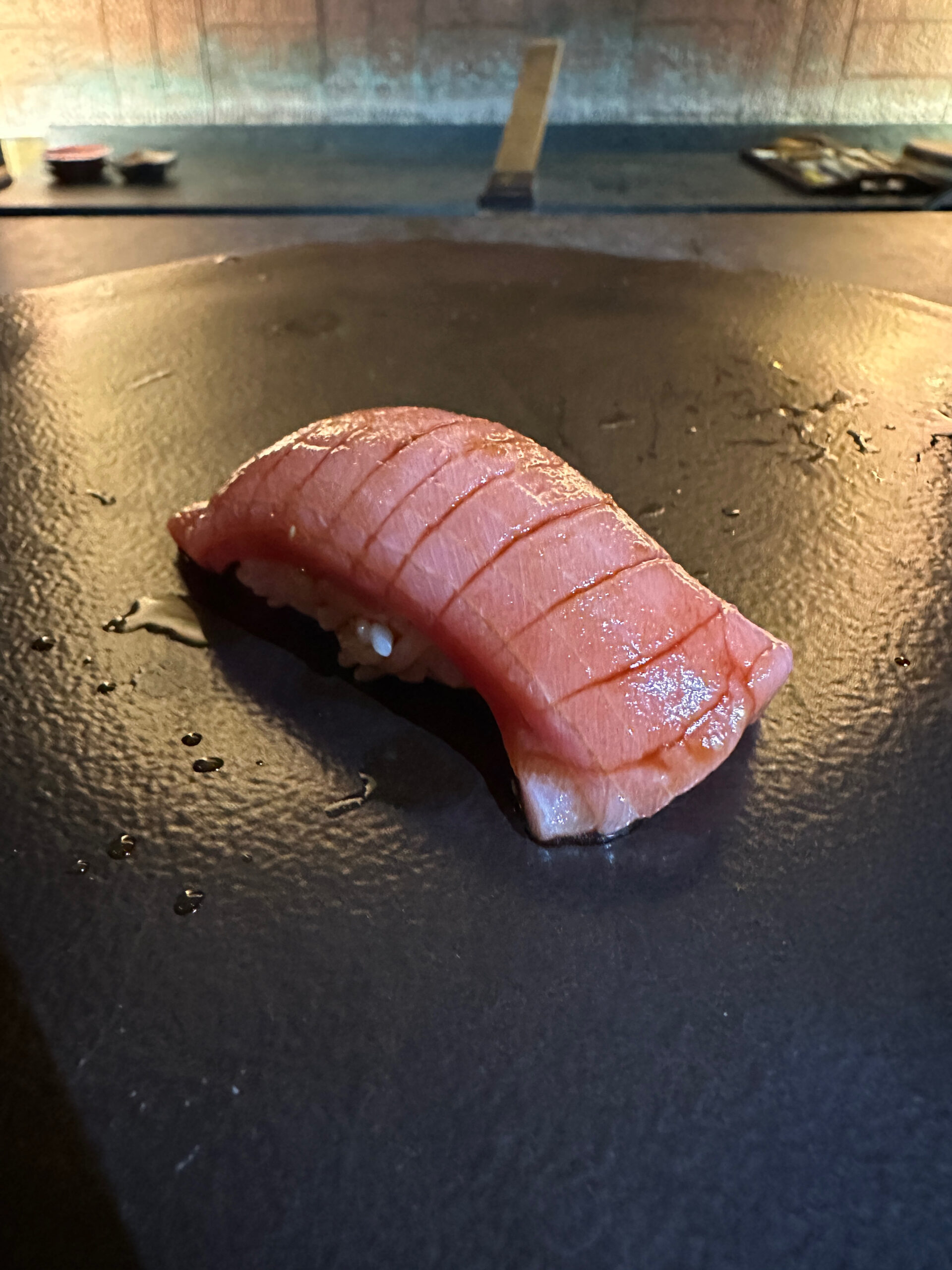
Chu Toro at Positivo’s Omakase Bar
That’s why it’s good to know locals
A few friends tipped us off to Dorado Beach, an enclave in Dorado proper, a municipality about 45 minutes from San Juan. The best way to describe Dorado Beach: if you’ve ever visited your grandparents in a retirement community, it’s that but for 40/50 year olds. So yes, that means there’s an insane amount of pickleball courts and the golf carts have 20 inch rims.
There’s also a Ritz Carlton “Reserve”. If any of these gambling companies take wagers on “which hotel is hosting White Lotus in 2030?”, put your money here.
Inside the RC (that’s what devout RCers call it on the Points Guy comments section), sits Positivo Sand Bar. Though it’s on a beautiful beach, the main Positivo is a standard hotel sushiya we’ve all seen 100 times. Of course they have crispy rice.
But here’s what you’re going to do
At the back of Positvo is a small 6-seat Omakase-only counter, run by Masato Okamoto, a veteran of Ritz Carlton’s and a very engaging personality. I’m on record as not giving one single shit if an Itamae is engaging or quiet, but I imagine that most diners will be Omakase rookies that will appreciate his style.
There are two seatings a night, at 6:15 and 8:30pm, Wednesday to Sunday. There are two options: $250 and $350, with the difference being the quantity and quality (though I’m dubious on this) of the nigiri. I was still drinking the Dassai Kool-Aid after visiting their new Hudson Valley Brewery, so I begged/convinced our party to hit the Dassai 23 ($140).
Ps: if you’ve checked out the Positivo drinks menu on their website, you’ll see that Sake is suspiciously absent. Don’t worry, the in-person menu is far more extensive.
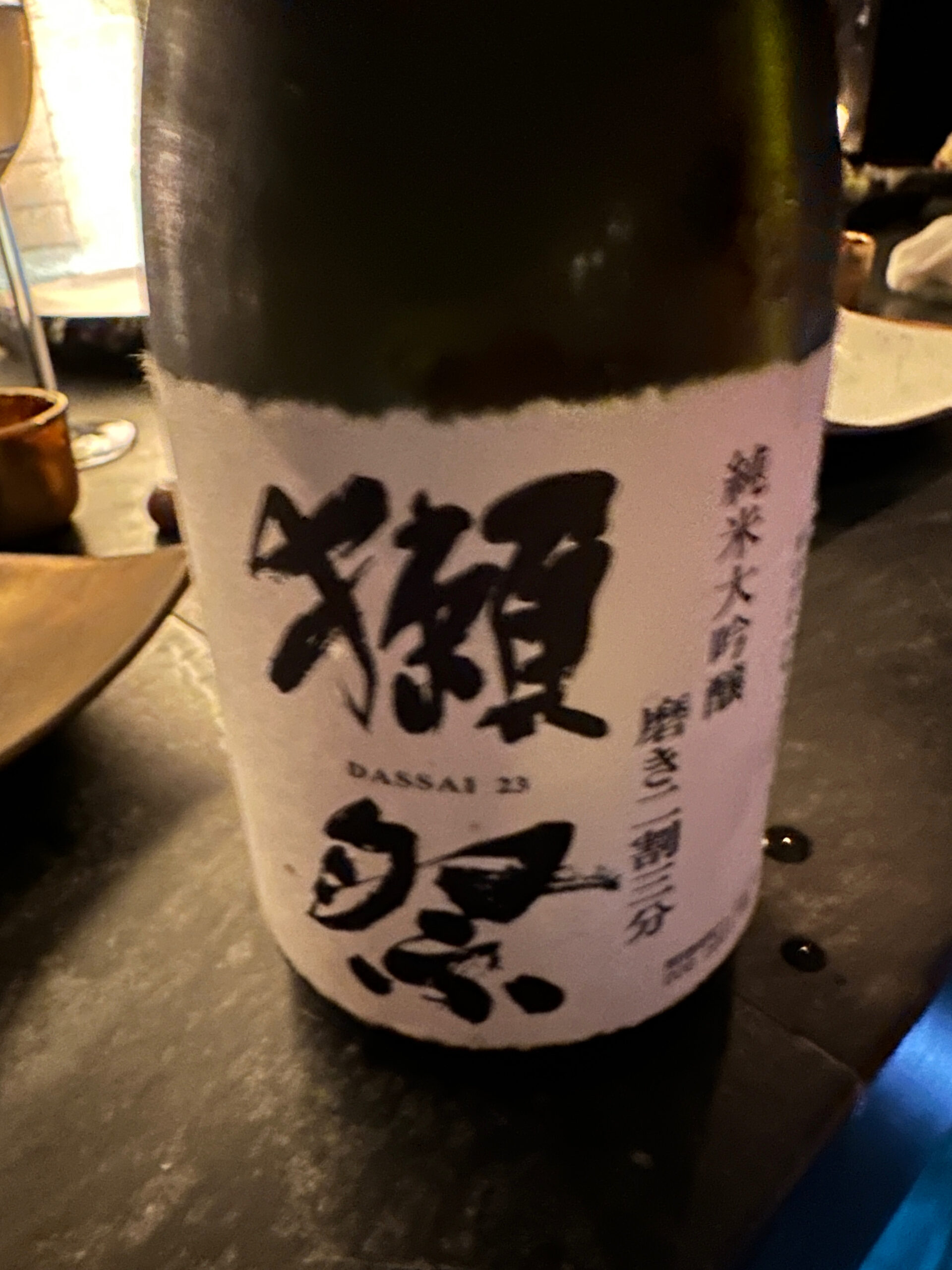
Dassai 23
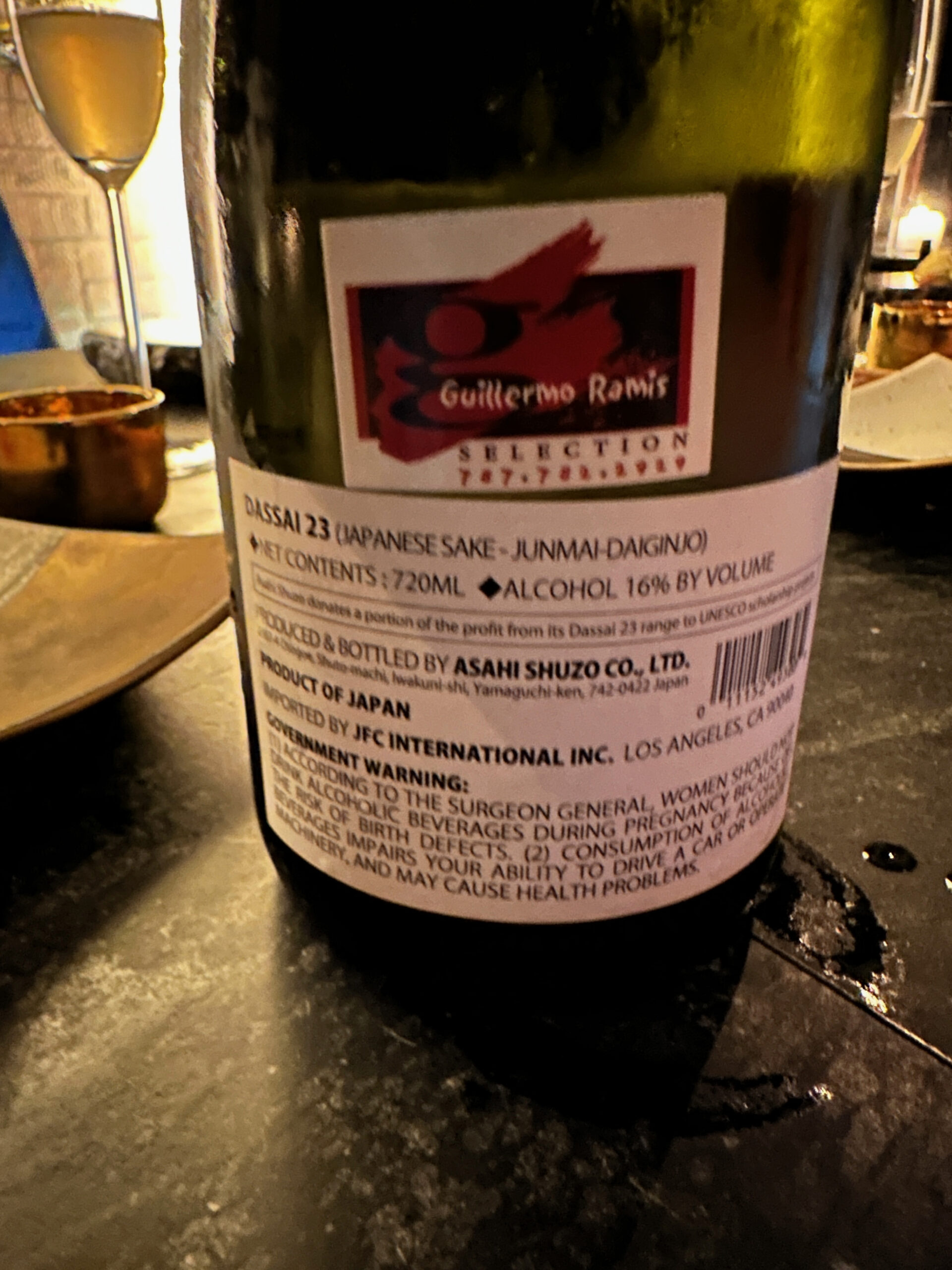
Dassai 23
Let’s talk about the atmosphere first
The best sushiya are temples to serenity (as the name of the perfume they push on you at Bloomingdale’s). Turns out that a sushiya with the waves of the ocean lapping gently 10 feet away is almost as cool.
You know what’s not as cool? Being 30 feet from the Itamae. Seriously, look at how deep this counter is.
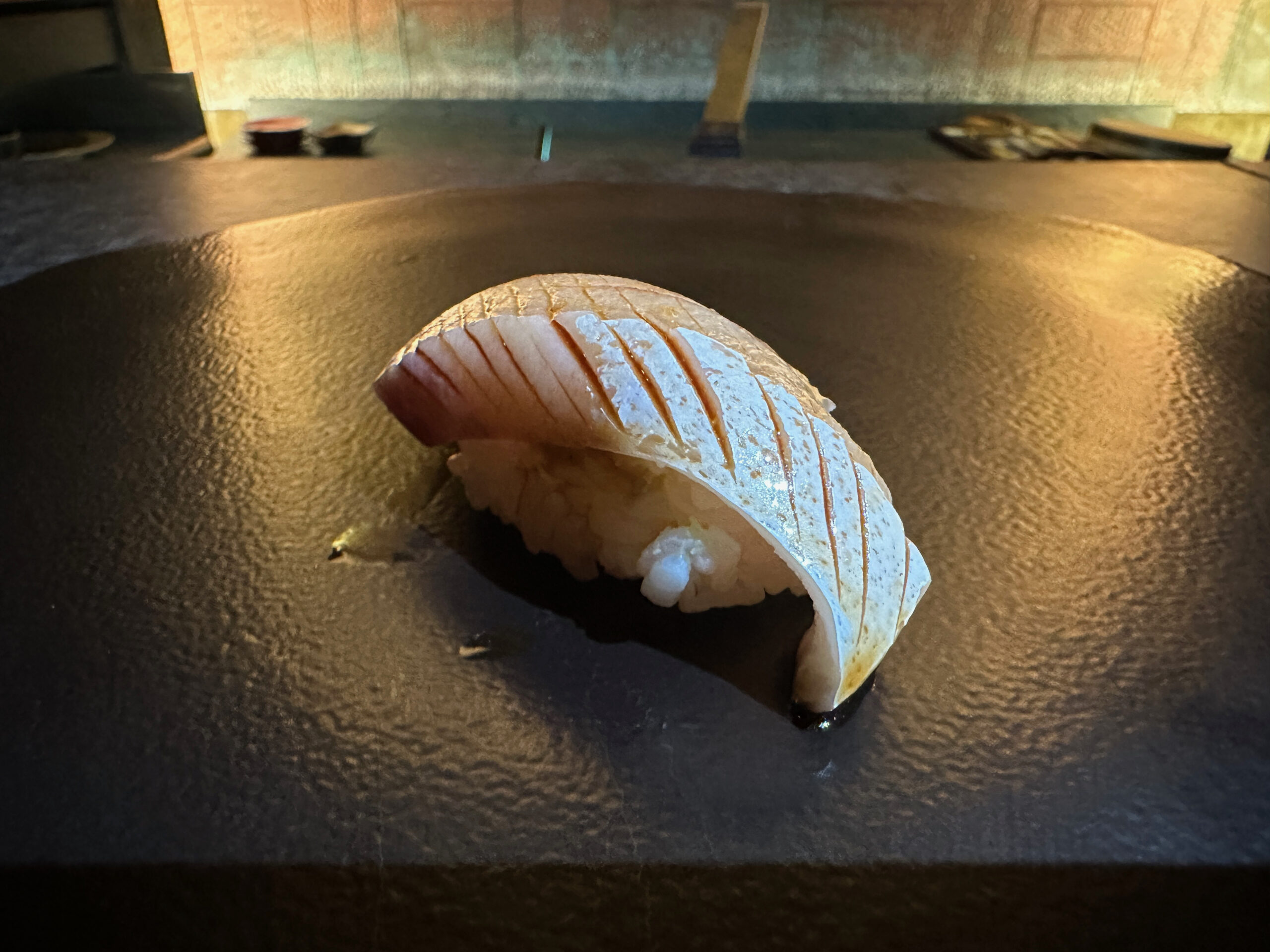
According to my crack investigative research, the restaurant goofed when making the counter and it would be too annoying to fix. So every time Masato-san passed us a course, he was recreating the Heisman Trophy pose.
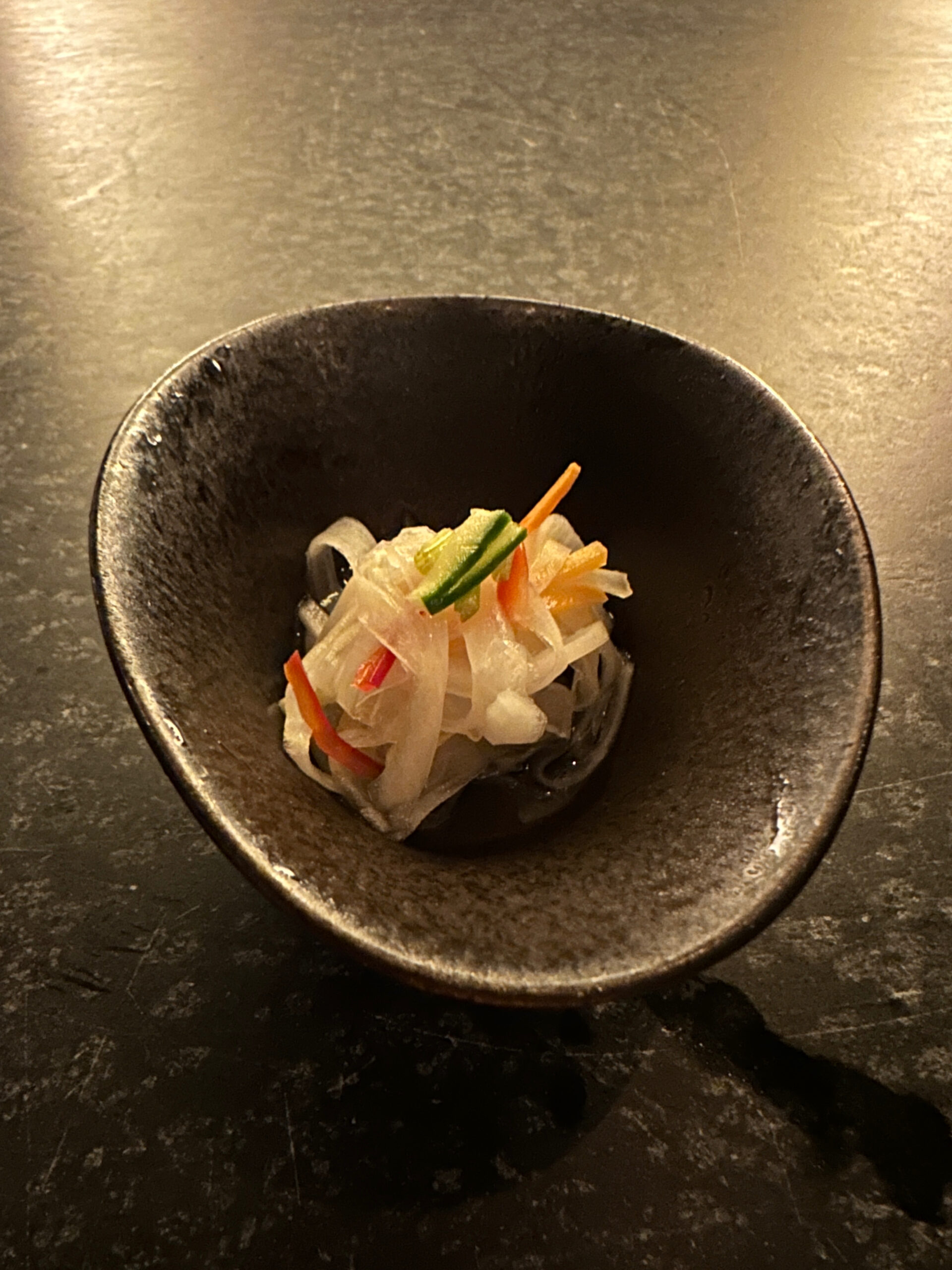
1: Hirame with pickled vegetables
The Sashimi Course is Beautiful
Masato-san takes almost 10 minutes to prepare a variety of sashimi courses, and it’s worth every second. Most impressive is the treatment of Hirame (olive flounder), a shiromi (white fish) that usually needs a taste booster seat. Impressively, that comes in the format of Uni that the Hirame is wrapped around. Delicious.
One note of warning: some at the counter got Ikura, while others did not (ahem), and I think I know why. Behind the counter, there were two small containers of Ikura, like the personal portions you’d get at a fish market. My bet is that’s all they had delivered.
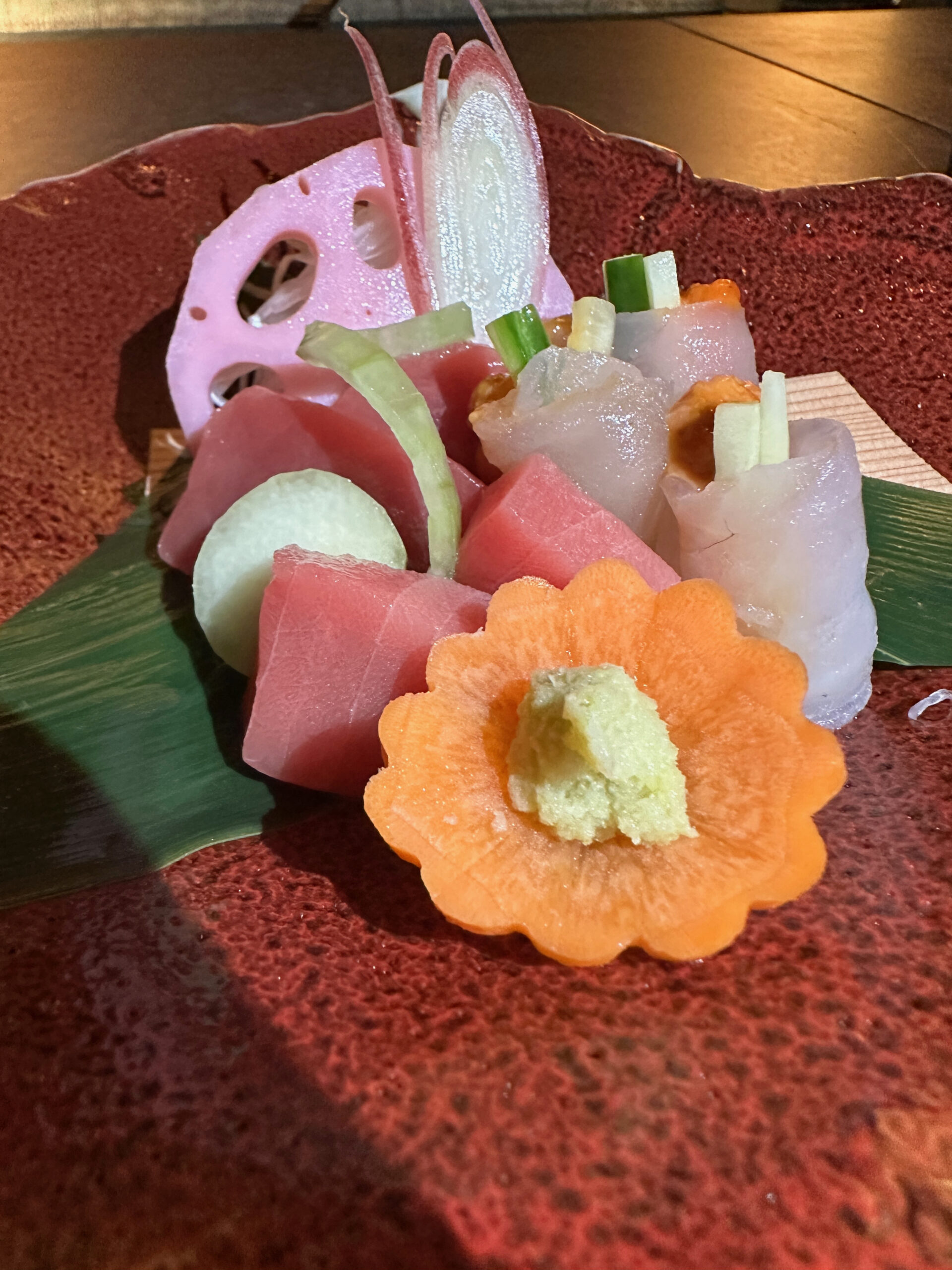
2: Sashimi course – Akami, Chu Toro, Hirame, Uni
And delivery is important
According to Masato-san, most of the fish we ate during the meal is shipped in whole and broken down in prep, as opposed to receiving slabs (called “Saku”), filets and whatever else like at other sushiya. Shipments come in three times a week, and it’s probably not cheap, so that plus the standard hotel pump equals no surprise that Positivo’s Omakase ranges from $250 to $350 (for now…). Also shout-out Masato-san, because the quality of the fish (at least until the end…) was fantastic. Especially the Maguro, and so it’s no wonder that Akami and Chu Toro start the procession.
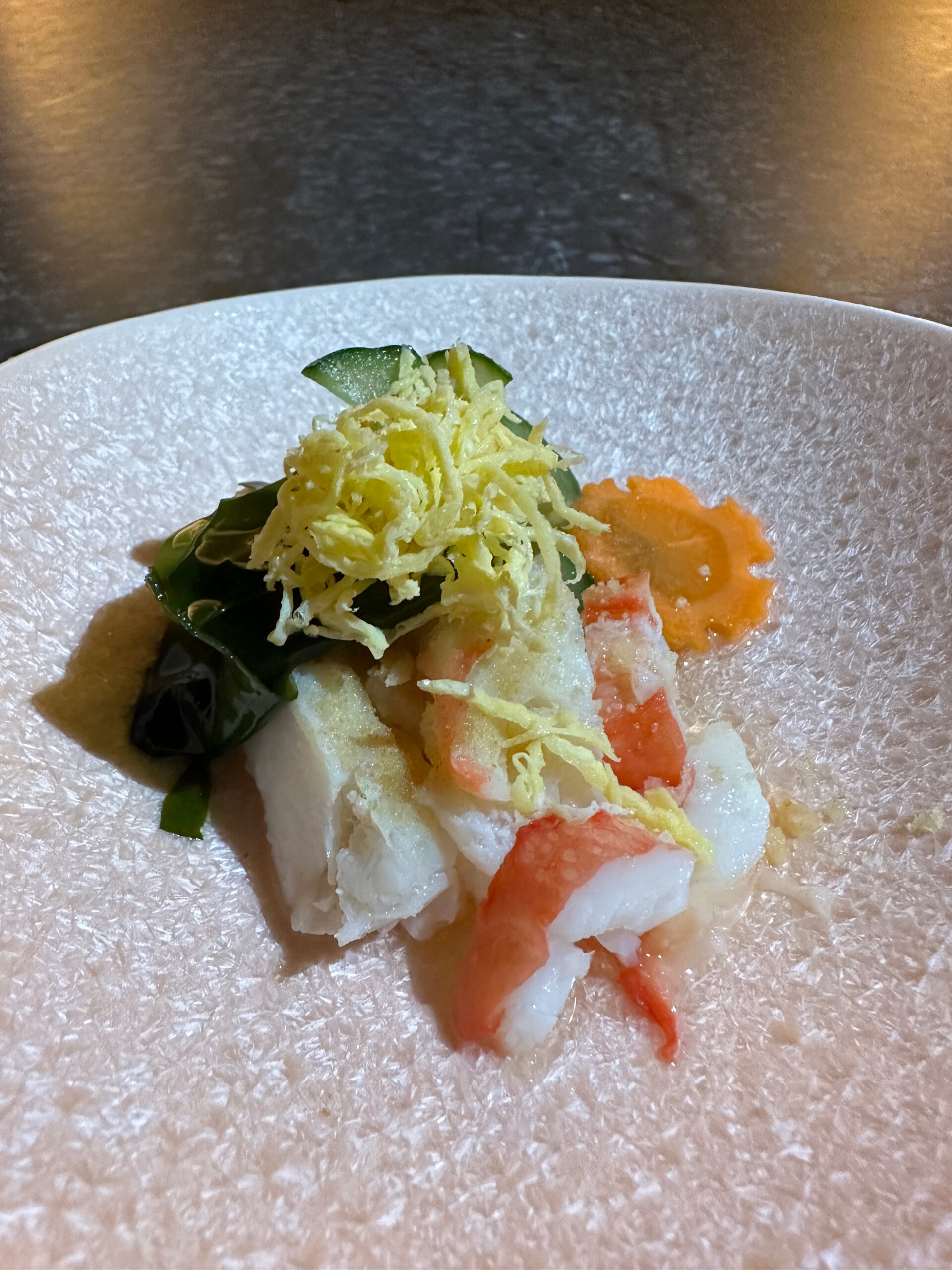
3: Sunomono Salad with fried egg and King Crab from near Alaska
The “Uh what is this” award of the evening
The final non-sushi course of the night was also the only problematic one (in taste, not in controversial history). Miso black cod is arguably Nobu’s lasting impact on American sushi and the quintessential fusion dish. So the bar is always going to be high, especially among people who dream of crispy rice.
This version was noticeably, uh, durable. It was apparently marinated for 80-100 hours (which is a pretty wide range of time?), and tasted like it was cooked for 80 to 100 more.
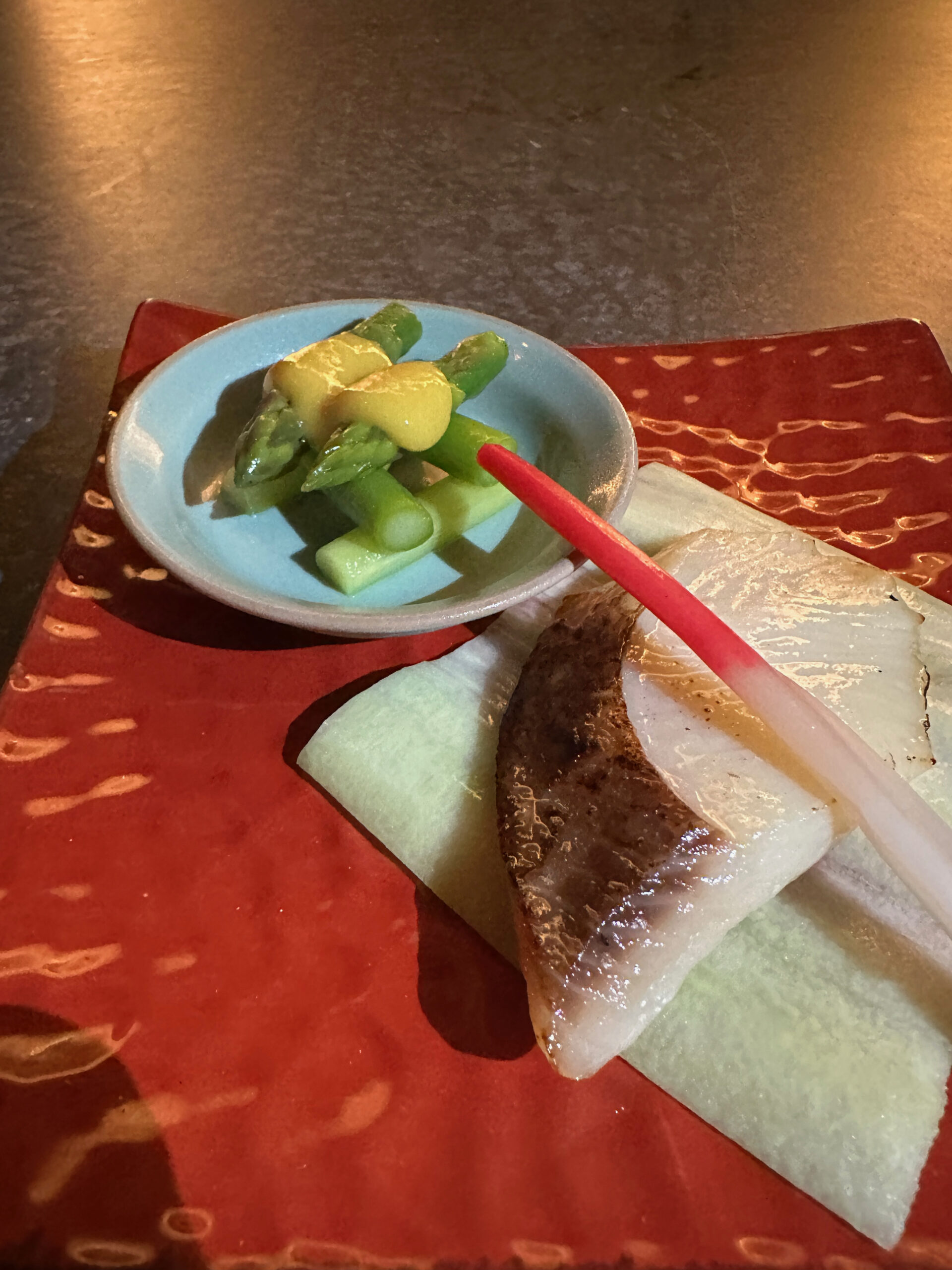
4: Miso Black Cod marinated 80-100 hours with asparagus and “miso sauce”
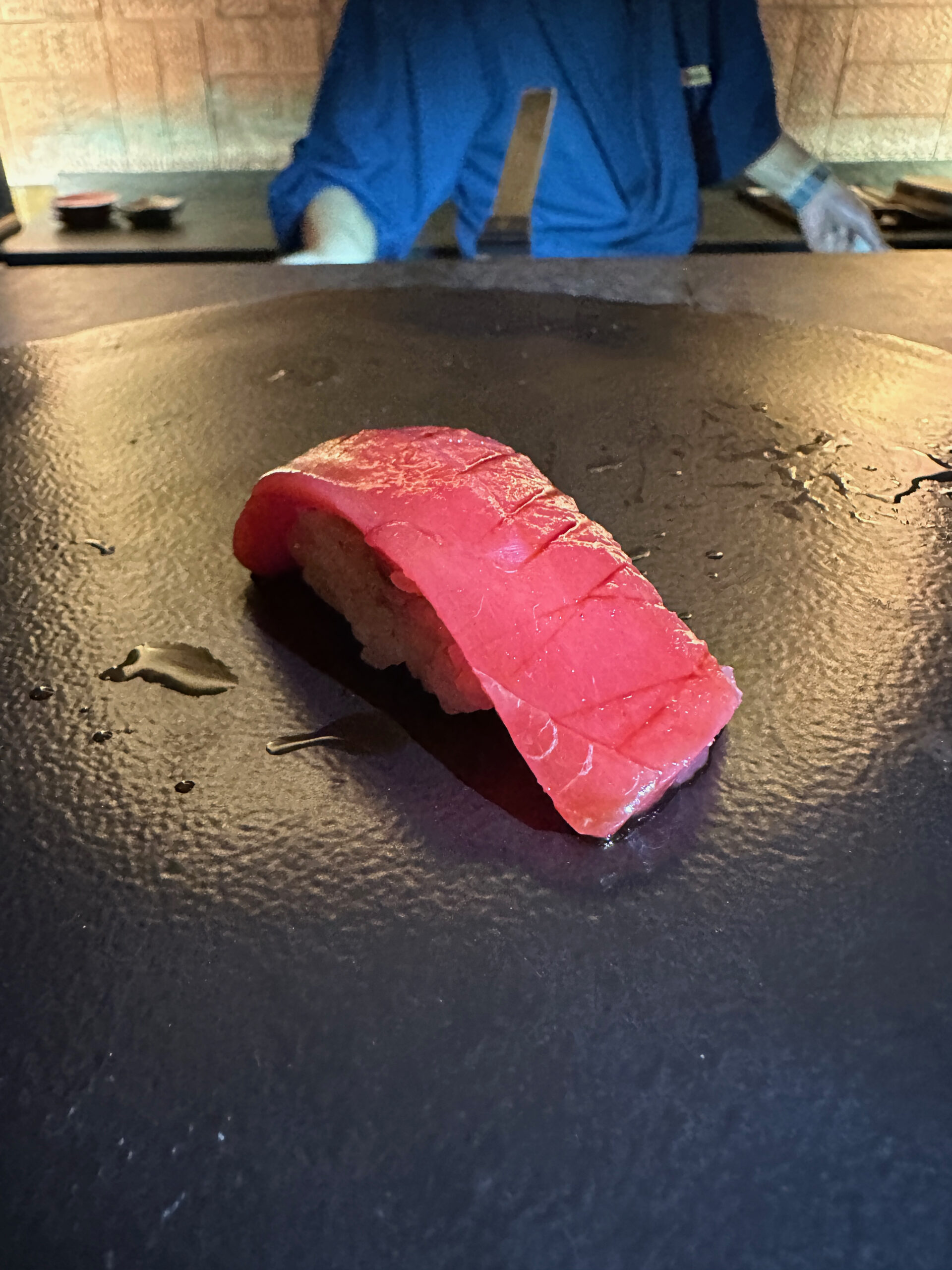
5: Akami
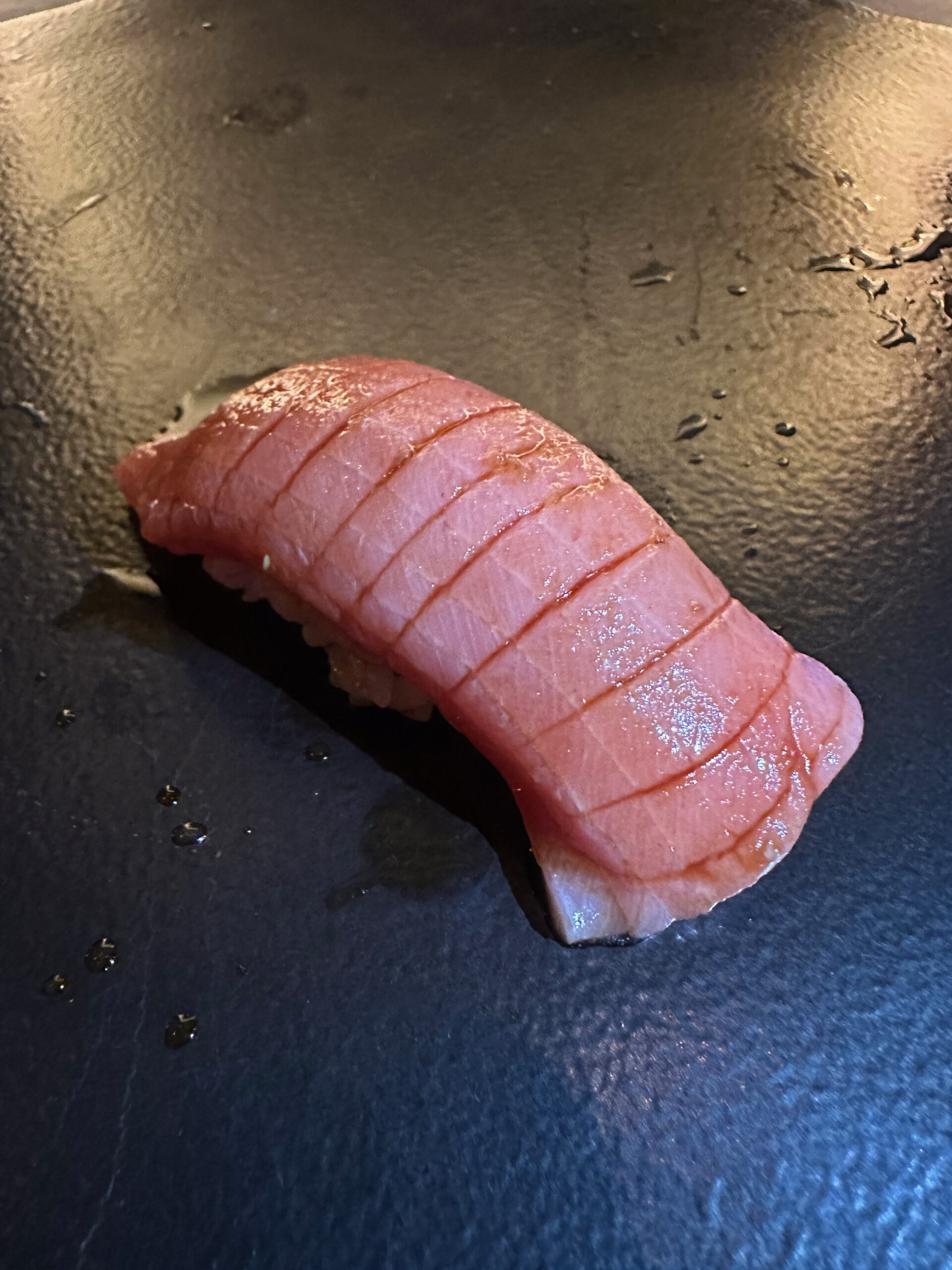
6: Chu Toro
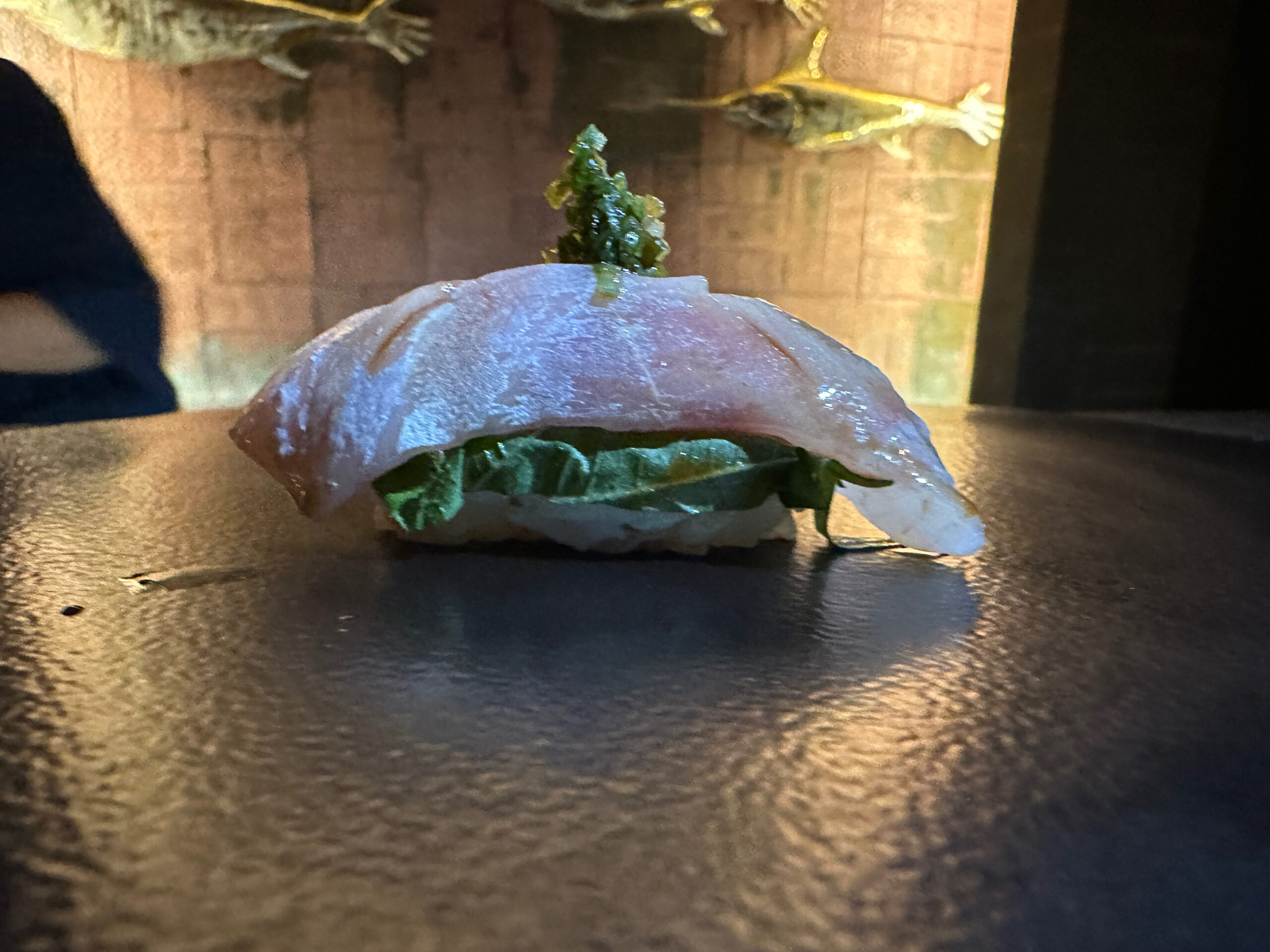
7: Suzuki with Shiso and Scallions – this was excellent
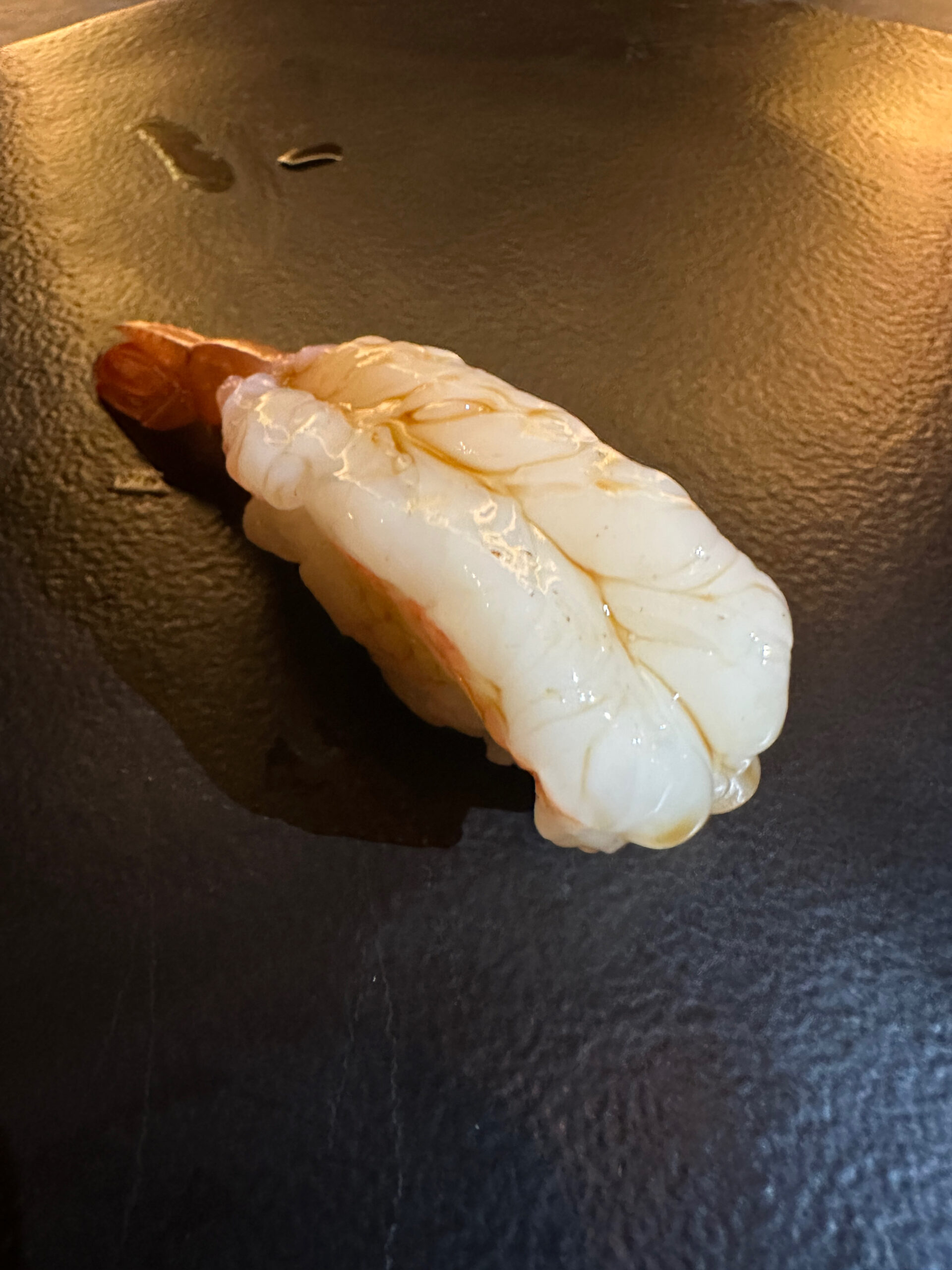
8: Botan Ebi
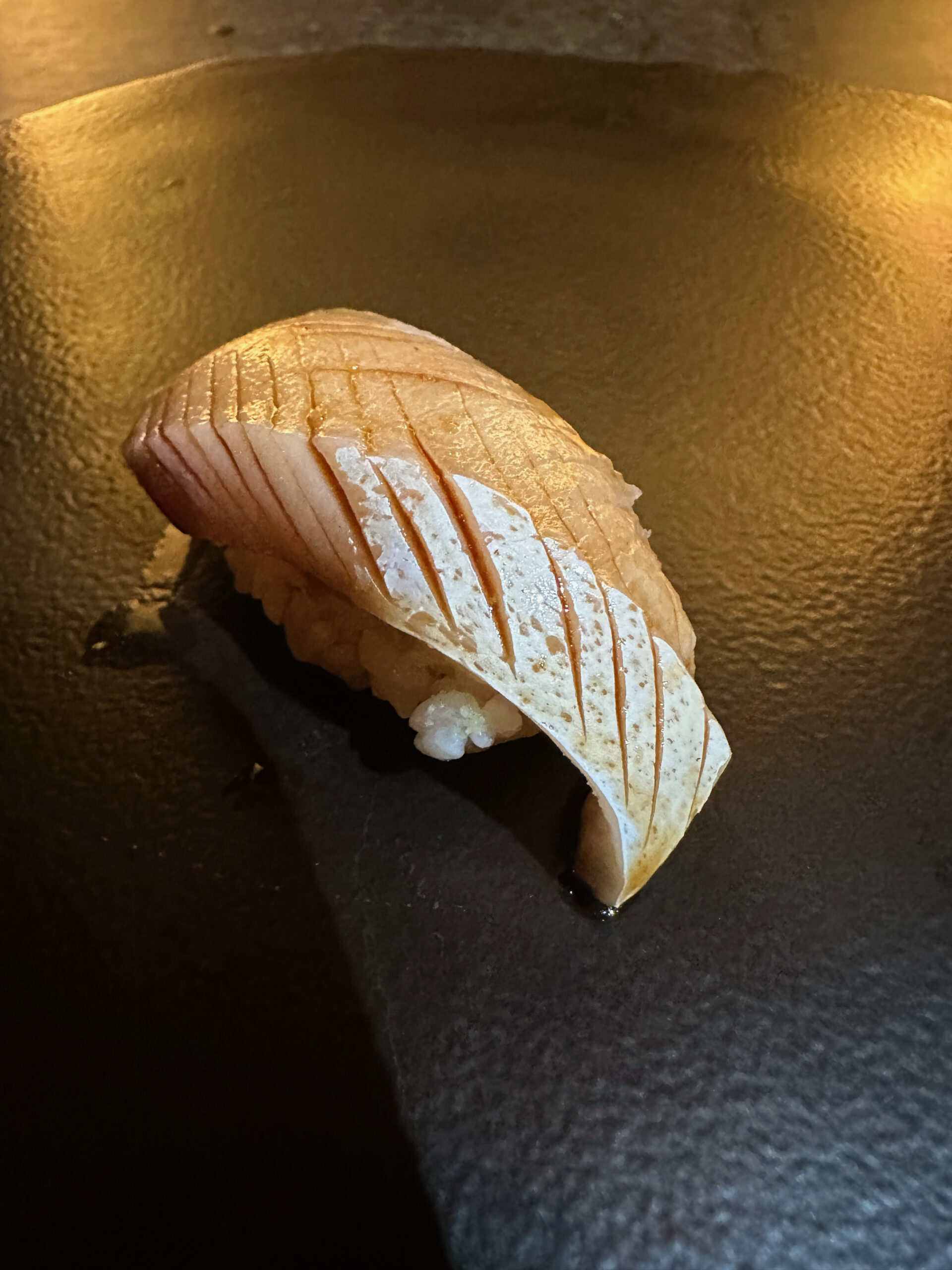
9: Hamachi “toro” (from the belly) – also excellent
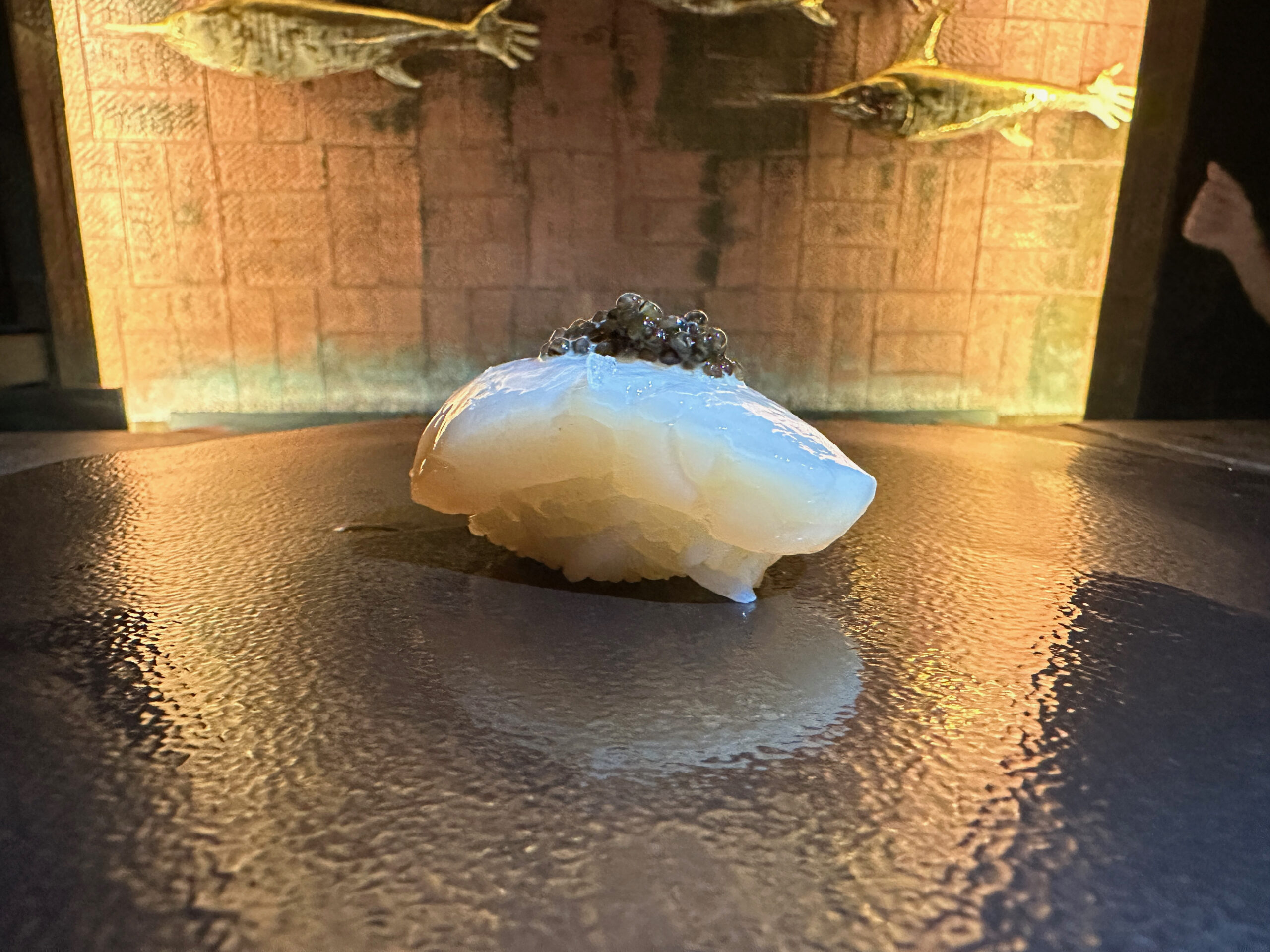
10: Hotategai
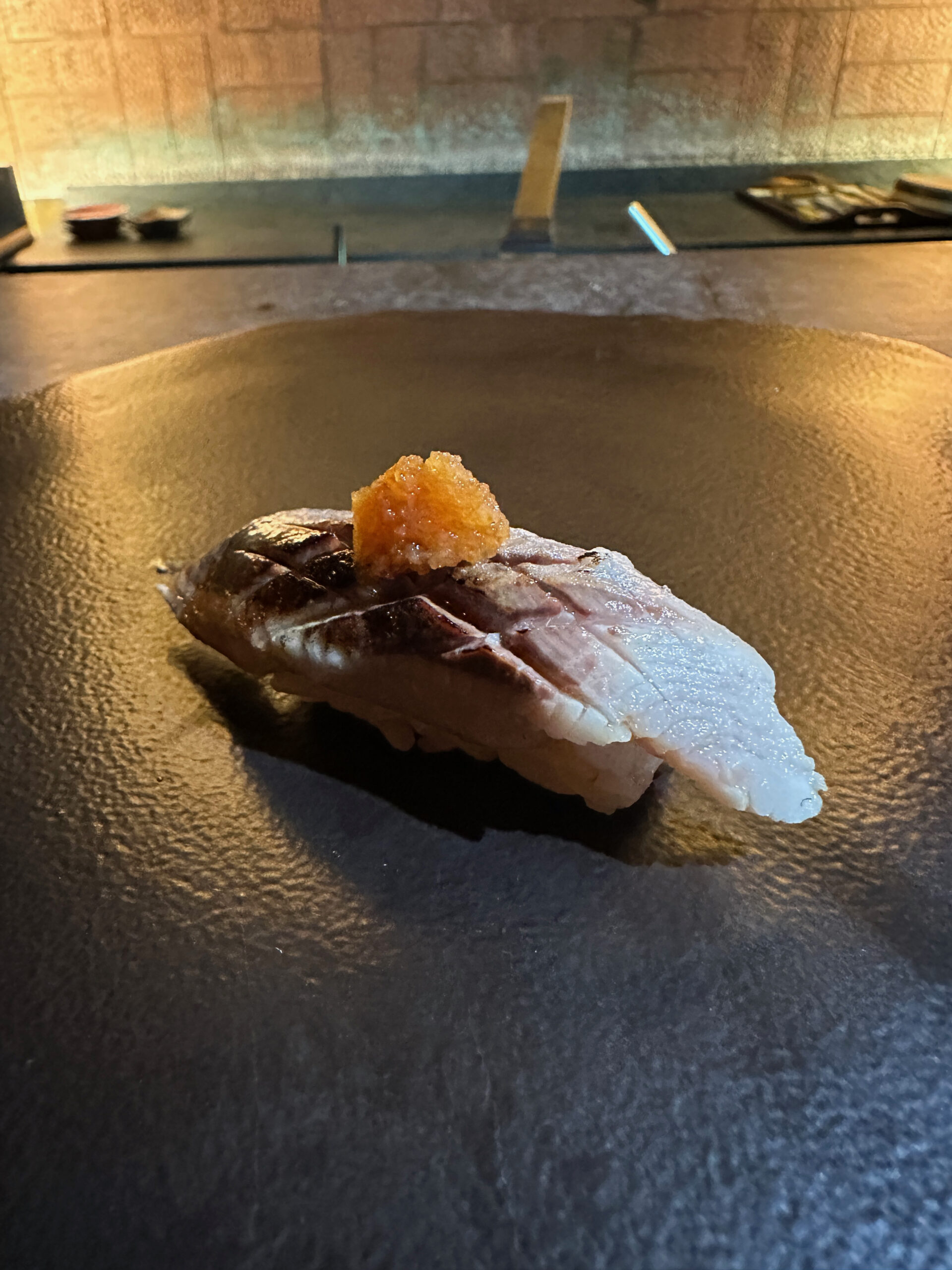
11: Iwashi
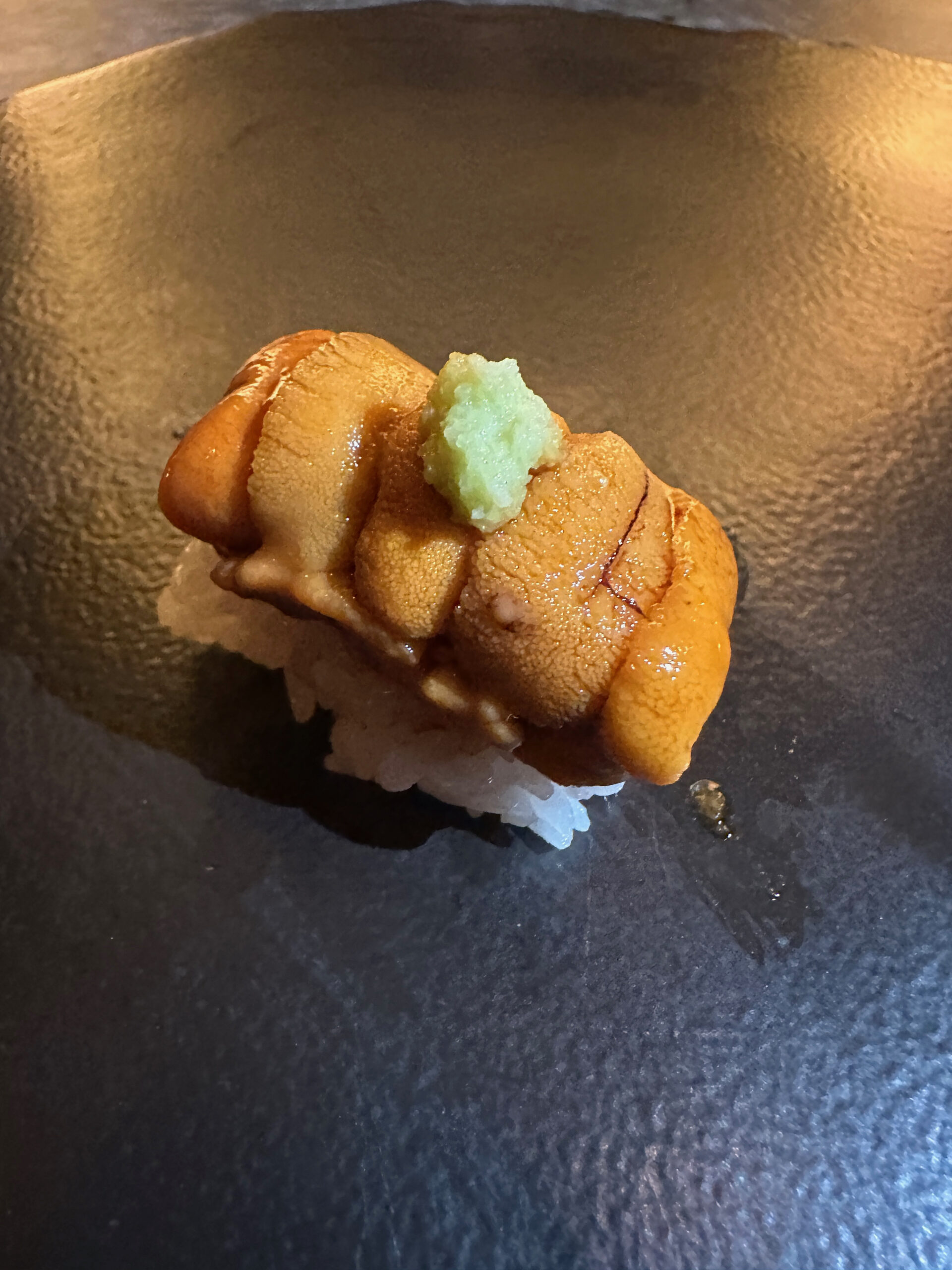
12: Uni
It’s not all rainbows and lollipops
I want to be clear that at no point – NO POINT (2 of you will get this reference) – did I say this sushiya was amongst the continent’s elite. While this is by far the best I found in Puerto Rico, and a wonderful night out, there are concerns.
Chief among them being the final three nigiri. First, King Crab (Kani) from Alaska that was curiously lacking in flavour.
Remember that Crab is not a traditional Edomae ingredient.
Its popularity as a Neta in North American menus actually comes from a little-known fine dining establishment called Red Lobster. Perhaps you’ve heard of it. Some of you might think I’m joking, but I’m as serious as Kronkite – Americans loved crab from places like Red Lobster, so putting it on sushi menus helped bridge the gap for newbies.
These days, you will see Zuwaigani (snow crab) and Kegani (hairy crab) in otsumami courses, but rarely Tarabagani (King Crab) as nigiri. There’s a reason for that.
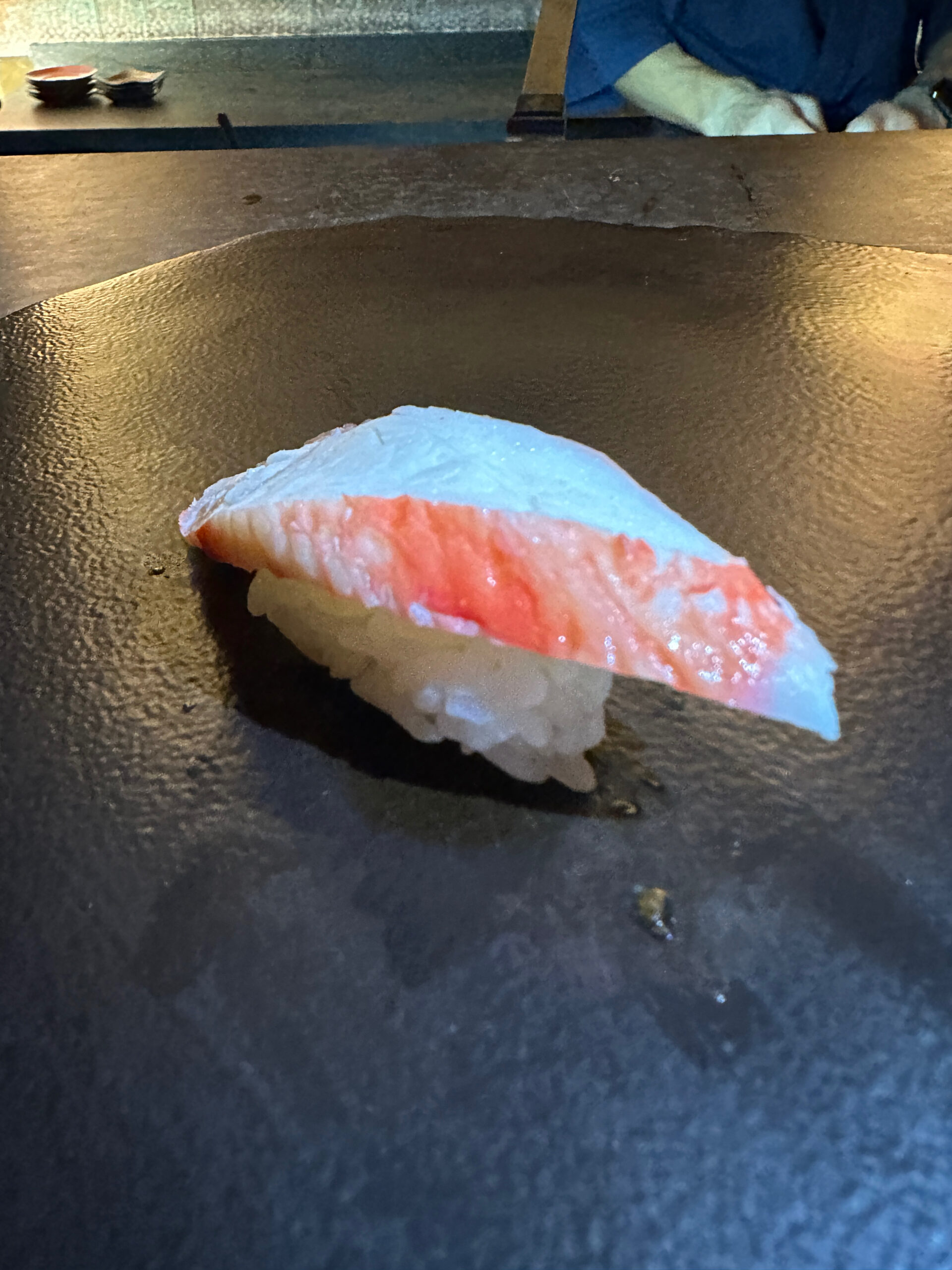
13: King Crab (Kani)
Second, Shiro Maguro (albacore tuna), a Neta that belongs in a can not on shari (sushi rice). It’s topped with white truffle, a defacto acknowledgement that it also lacks flavour. Unfortunately, the truffles tasted like cardboard.
And finally, Wagyu Aburi (torched), which I don’t normally hate as much as Albacore, but was doused in a sauce straight from school lunch.
These non-traditional offerings are expected at any hotel restaurant. You’re catering to people who want convenience, not excellence, and some of those people may rate albacore tuna, tasteless truffles, torched wagyu and a mystery sauce. I didn’t, but if you’re sitting in your room wondering whether it’s worth dropping $250 on your first omakase experience, consider the above.
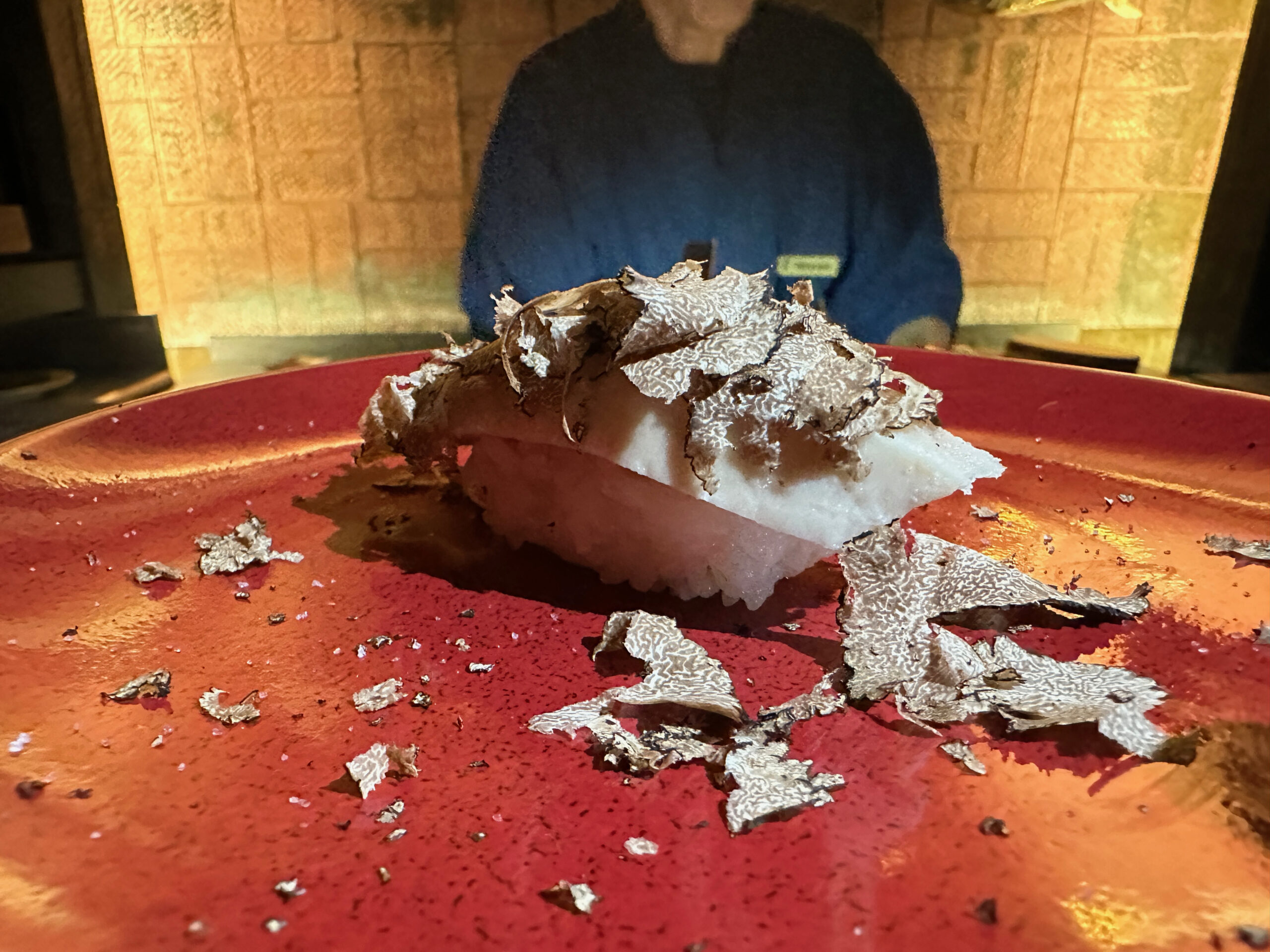
14: Shiro Maguro with black truffle
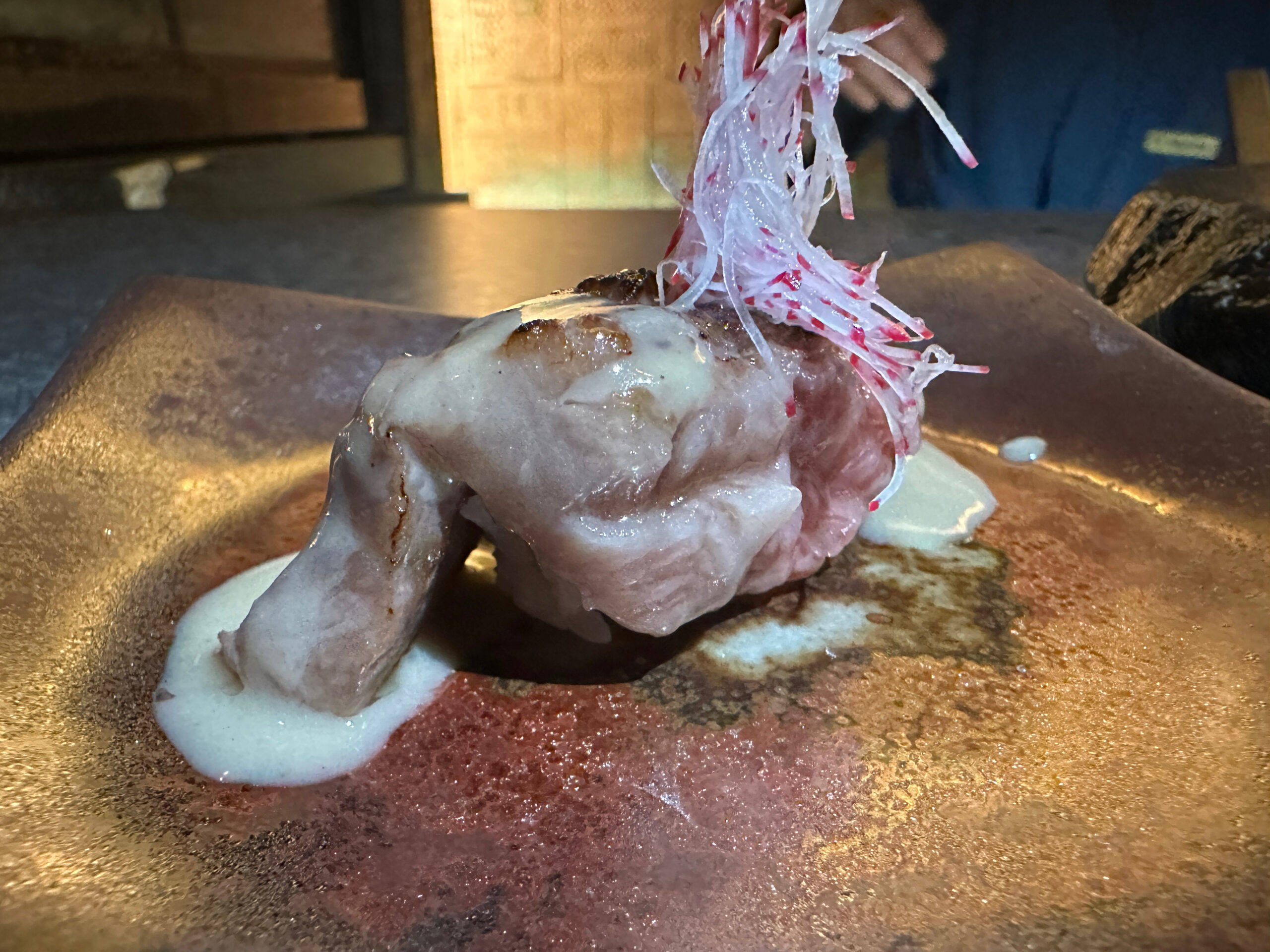
15: Wagyu with a sauce straight from a school cafeteria
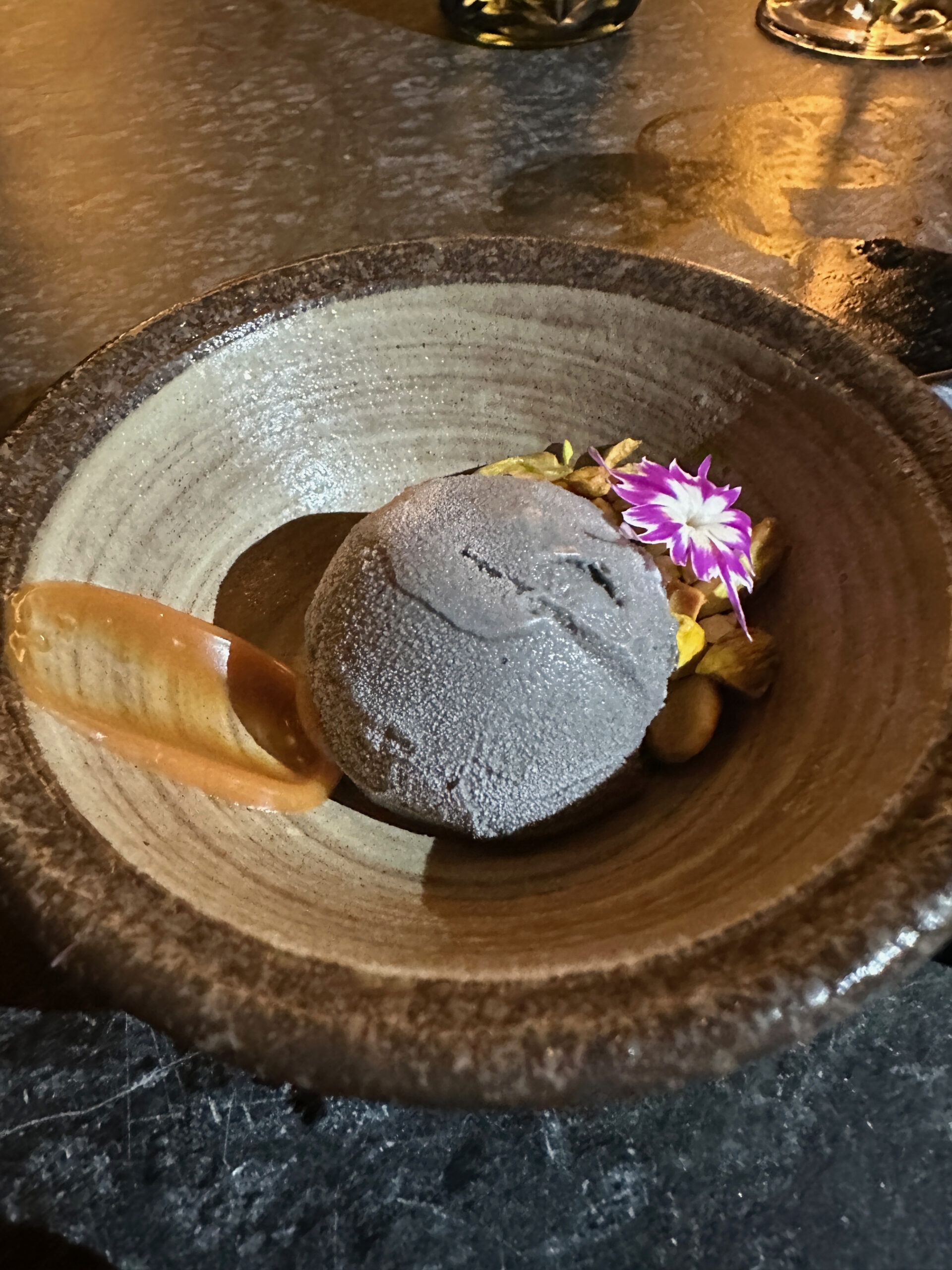
17: Dessert
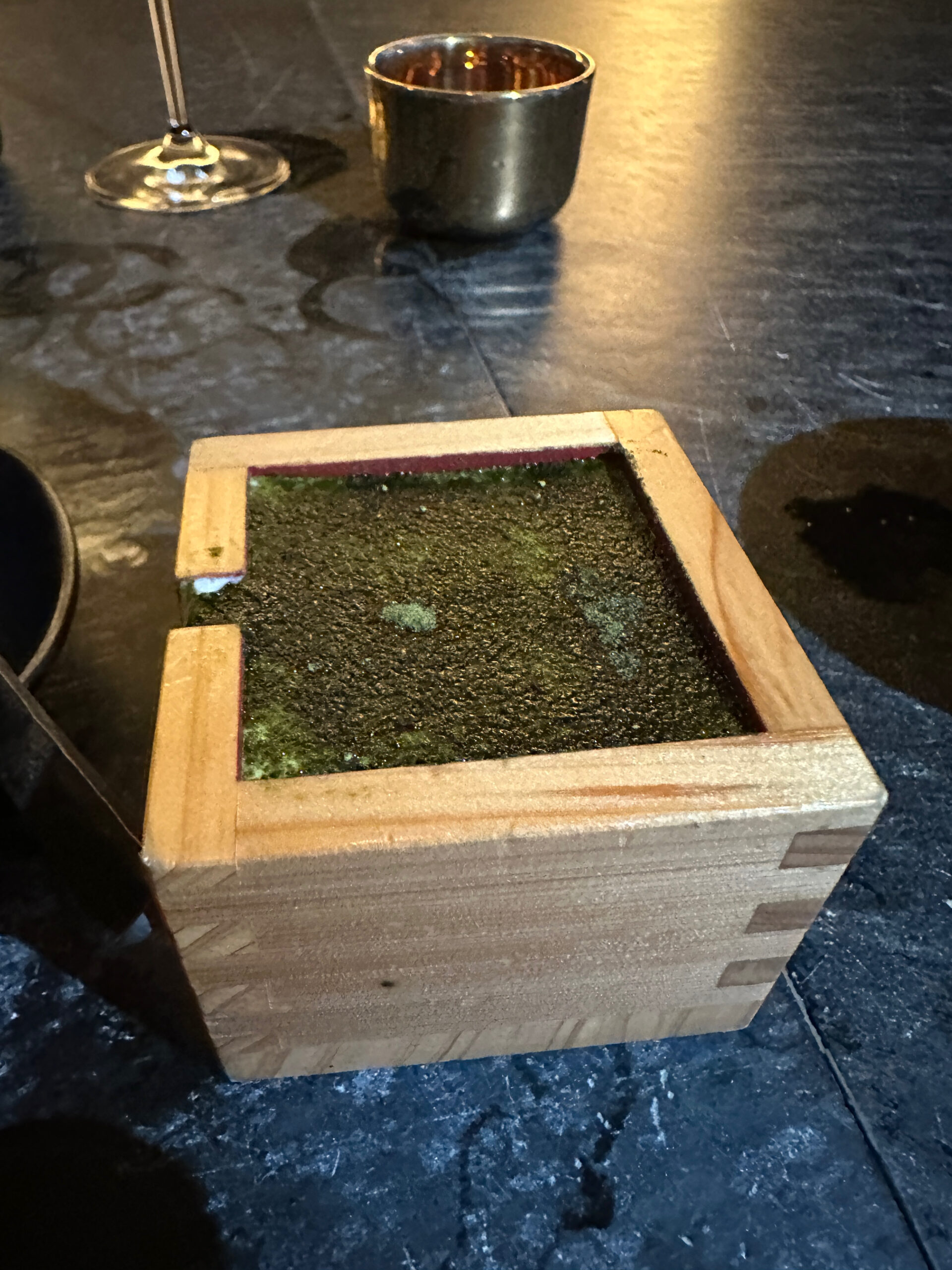
18: Matcha Tiramisu
The Verdict
Is it a world class sushiya? No. But considering the limited options in Puerto Rico (for now), the enthusiasm of Masato-san, and the beachcombing vibes steps away, it’s worth a visit (as is all of PR). Just make sure to hang tight at the $250 option.
Recommended.
